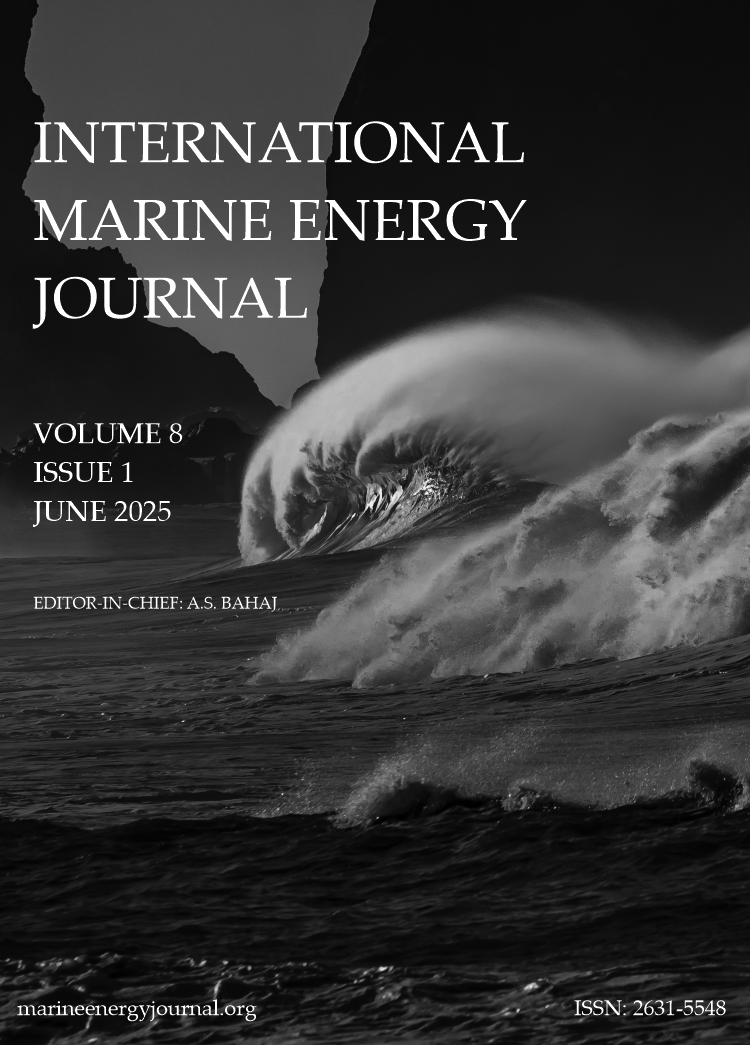Degrees of freedom effects on a laboratory scale WEC point absorber
DOI:
https://doi.org/10.36688/imej.8.29-35Keywords:
degrees of freedom, number of bodies, laboratory testing, point absorberAbstract
There are many archetypes of wave energy converters (WEC) that vary widely in operating principles, geometry, controls, number of bodies, and degrees of freedom (DOF). Fundamental WEC research often simplifies this complexity by reducing the number of floating bodies and restricting motions to the dominant degree of freedom. This paper presents the effects of increasing the number of bodies and degrees of freedom of a WEC on body response, power take-off controls, and power capture. The results are from physical experiments with a 1 meter diameter model of the open-source laboratory upgrade point absorber (LUPA). LUPA is a two-body point absorber WEC with a buoyancy-driven float and a reactionary spar with a large heave plate. It can be transformed between a one-body heave-only, two-body heave-only, and a two-body 6 DOF device without changing the geometries, controls, or mooring lines. Results show that adding a secondary submerged body to a point absorber causes power capture to decrease by up to 76% at longer periods. It is also demonstrated that constraining a two-body point absorber to heave motions can be a good power capture approximation for a six-DOF moored two-body point absorber with slight shifts in the resonant period. A discussion on the uncertainty of frequently used metrics in wave energy literature is included with a special focus on uncertainty in wave energy experimental testing.
Downloads
Published
How to Cite
Issue
Section
License
Copyright (c) 2025 Courtney Beringer, Bret Bosma, Bryson Robertson

This work is licensed under a Creative Commons Attribution 4.0 International License.
I the author/we the authors understand that I/we retain copyright over our article. I/we grant a licence to IMEJ to: publish my/our article under the terms of the Creative Commons Attribution (CC BY) License which permits use, distribution and reproduction in any medium, provided the original work is properly cited, and identify IMEJ as the original publisher.


